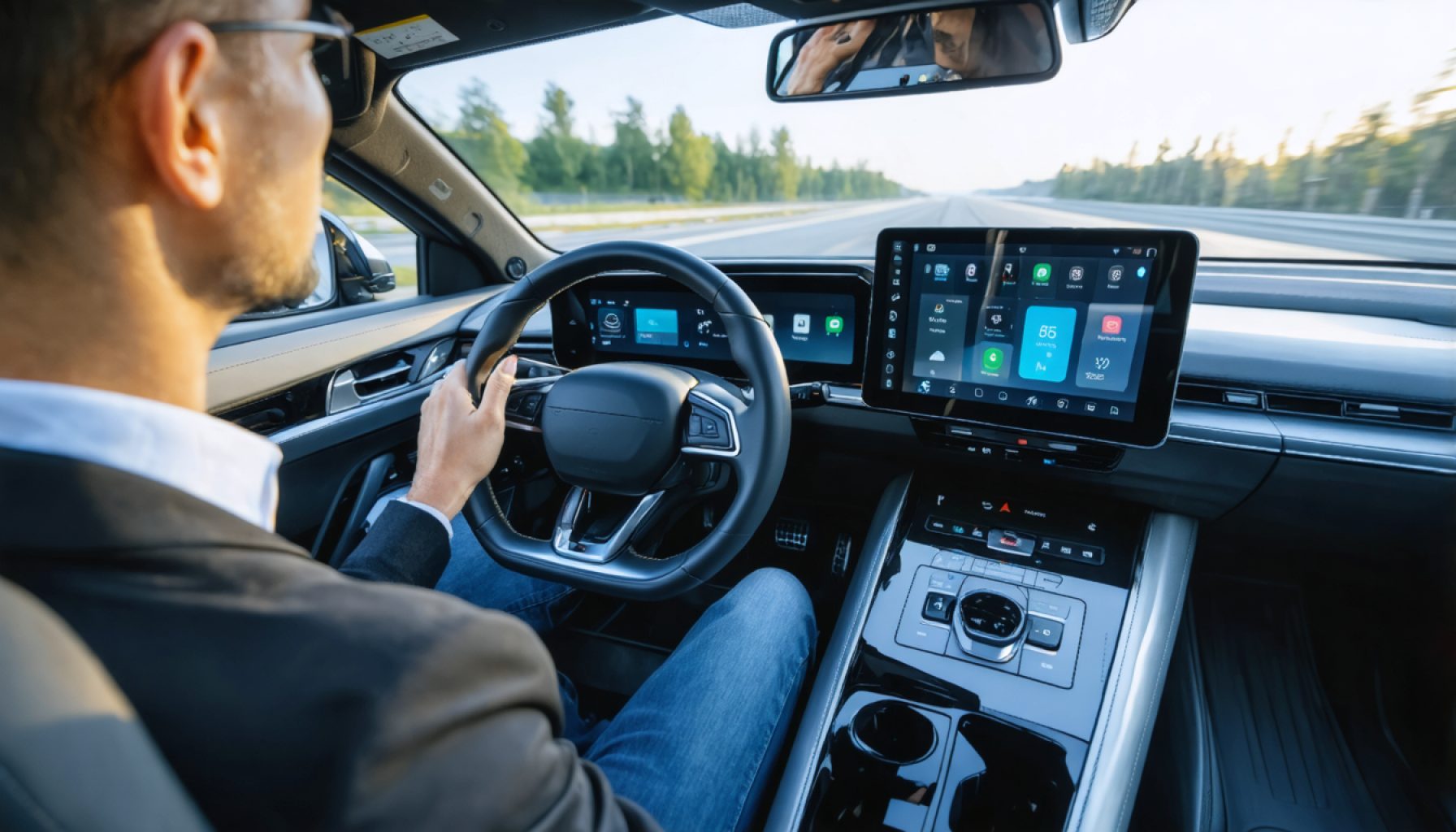- Li Xiang of Li Auto advocates for standardized autonomous driving terminology to enhance consumer understanding.
- Current terms like “L2” and “L3” often confuse consumers, leading to overconfidence and safety risks.
- Li proposes simplified translations: “Driving Assistance” for L2, “Automatic Driving Assistance” for L3, “Autonomous Driving” for L4, and “Driverless Driving” for L5.
- The global automotive industry faces challenges due to miscommunication about self-driving capabilities.
- High-profile accidents highlight the dangers of marketing that overstates a car’s autonomy level.
- Li’s call for cautious marketing and technological progress emphasizes safety and industry credibility.
- Consumers are encouraged to seek transparency and clarity to safely engage with emerging automotive technologies.
In the rapidly evolving world of automotive technology, the terminology for autonomous driving is turning into a puzzling labyrinth, leaving countless drivers and enthusiasts scratching their heads. Picture this: you’re browsing the latest car models, dazzled by sleek designs and promised capabilities, yet baffling terms like “L2” and “L3” loom, obscuring what the vehicles can truly achieve. Li Xiang, the visionary leader of Li Auto, is on a mission to clear this fog of confusion by urging a standardization of terms that resonate with everyday understanding.
Imagine stepping into a car showroom where technology meets science fiction. The terms staring back at you – cryptic sequences like L2 and L3 – whisper promises of autonomy, yet often lead to a gap between expectation and reality. Li Xiang has sparked a dialogue, proposing a refreshingly simple translation: “Driving Assistance” for L2, “Automatic Driving Assistance” for L3, “Autonomous Driving” for L4, and finally, “Driverless Driving” for the dreamlike L5. It’s a clarion call for clarity, a rallying cry against the dazzling yet dangerous marketing spins that leave consumers overconfident and sometimes, tragically, in harm’s way.
Across the globe, the automotive industry is grappling with the repercussions of miscommunication. The allure of a self-driving future beckons, yet the pathway is littered with misunderstanding. High-profile accidents have cast a glaring spotlight on this issue, where drivers, under the canopy of marketing bravado, overestimated their car’s capabilities.
Li’s advocacy for a restrained promotional approach, in tandem with technological advancement, isn’t just a business strategy; it’s a plea for safety and mutual progress. The stakes are high: the safety of millions on the roads and the credibility of an industry perched on the brink of revolutionary change.
This narrative isn’t merely an industry insider’s call to arms; it’s a reminder for each of us, as we interface with burgeoning technologies, to seek transparency and clarity. As the road ahead unfurls with autonomous wonders, understanding truly becomes power – and safety.
The Future of Driving: Demystifying Autonomous Vehicle Terminology
Understanding the Levels of Autonomous Driving
Autonomous vehicles are rapidly reshaping the automotive landscape, yet the complex terminology often leaves consumers perplexed. Terms like “Level 2” (L2) and “Level 3” (L3) are commonplace but can obscure a vehicle’s actual capabilities. Li Xiang, the CEO of Li Auto, is championing clarity and standardization in the industry.
Clear Definitions for Driver Confidence
– Level 2 (L2) – Driving Assistance: This refers to systems that provide hands-on assistance, such as adaptive cruise control and lane-keeping assistance. Drivers must remain engaged and attentive.
– Level 3 (L3) – Automatic Driving Assistance: At this level, the car can manage certain tasks autonomously under specific conditions, like highway cruising, but the driver must be ready to take control at any moment.
– Level 4 (L4) – Autonomous Driving: Vehicles can operate autonomously in designated areas without human intervention, but areas of operation may be restricted.
– Level 5 (L5) – Driverless Driving: Represents full autonomy where human intervention is unnecessary, across all environments—a vision yet to be realized.
The Need for Standardization and Safety
High-profile incidents have underscored the risks of miscommunication surrounding self-driving capabilities. Li’s advocacy for a straightforward, global standard is vital for enhancing consumer understanding and safety. Misinterpretation can lead to overconfidence and dangerous situations.
Industry Trends and Market Forecasts
The demand for autonomous vehicles is accelerating. According to the International Energy Agency, autonomous vehicle sales could reach 33 million units worldwide by 2040. Market leaders like Tesla, Waymo, and traditional automakers are investing heavily in R&D to claim a share of this burgeoning market.
Controversies and Limitations
Despite advancements, several challenges persist:
– Regulatory Hurdles: Different countries have varying regulations, making it difficult to create a unified global framework.
– Technical Challenges: Adverse weather conditions, road infrastructure, and the sophistication of AI systems remain technical hurdles.
– Public Perception and Trust: Gaining public trust is crucial, especially following accidents reported in the media.
Insights and Predictions
Industry experts predict a phased implementation of autonomous technology, with L3 and L4 functionalities gradually becoming mainstream. We could see L5-capable vehicles on the road in select urban areas within the next decade, contingent on regulatory approvals and infrastructure readiness.
Quick Tips for Consumers
– Education: Stay informed about the capabilities and limitations of your vehicle’s driving assistance systems.
– Engagement: Actively participate in test drives that explain features in real-world scenarios.
– Safety First: Always prioritize understanding over assumption—no autonomous system can yet replace human oversight in every situation.
Related Resources
Explore the latest in automotive innovation and how it’s shaping our roads at Tesla and Waymo.
In conclusion, clarity in communication and standardization of autonomous driving terminologies are key to a safer, smarter future on the road. Informed drivers are better equipped to harness these technologies responsibly.
